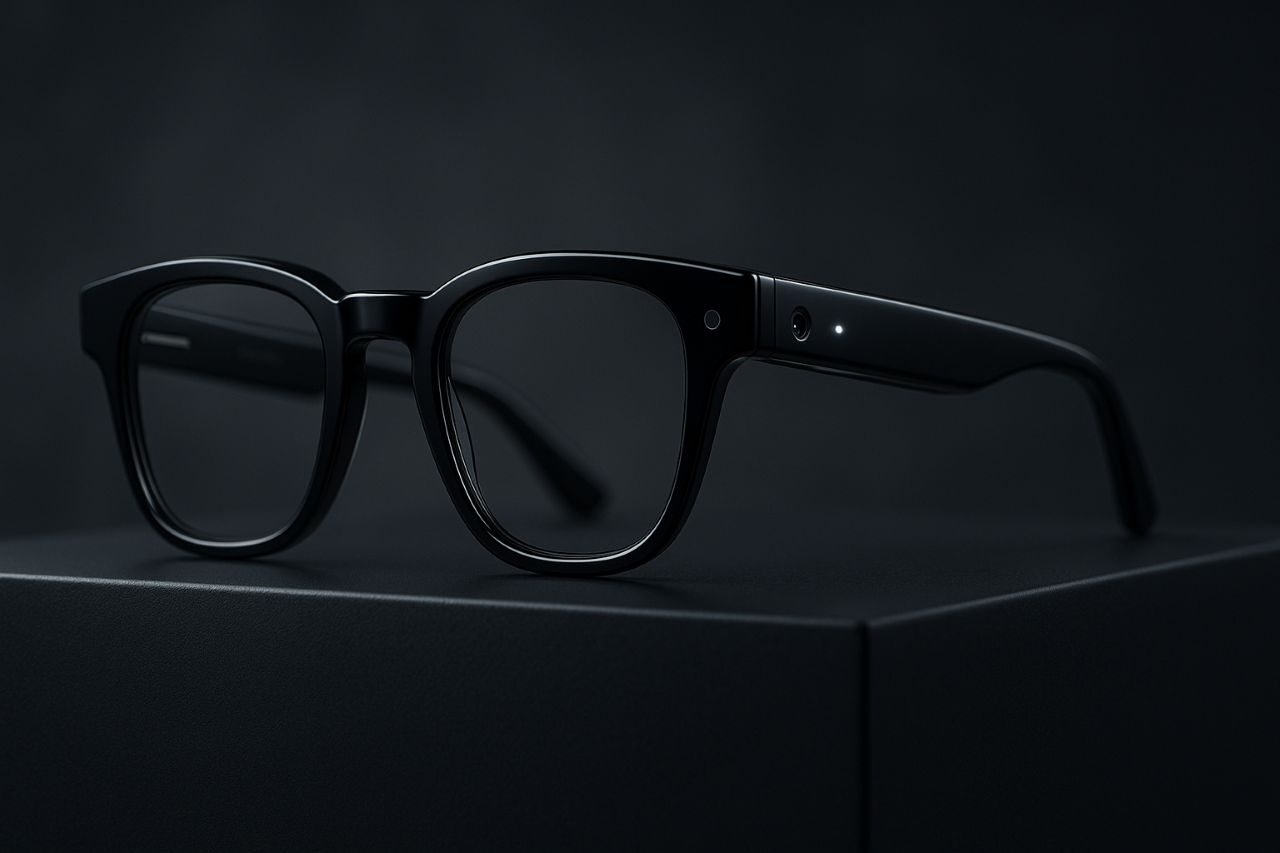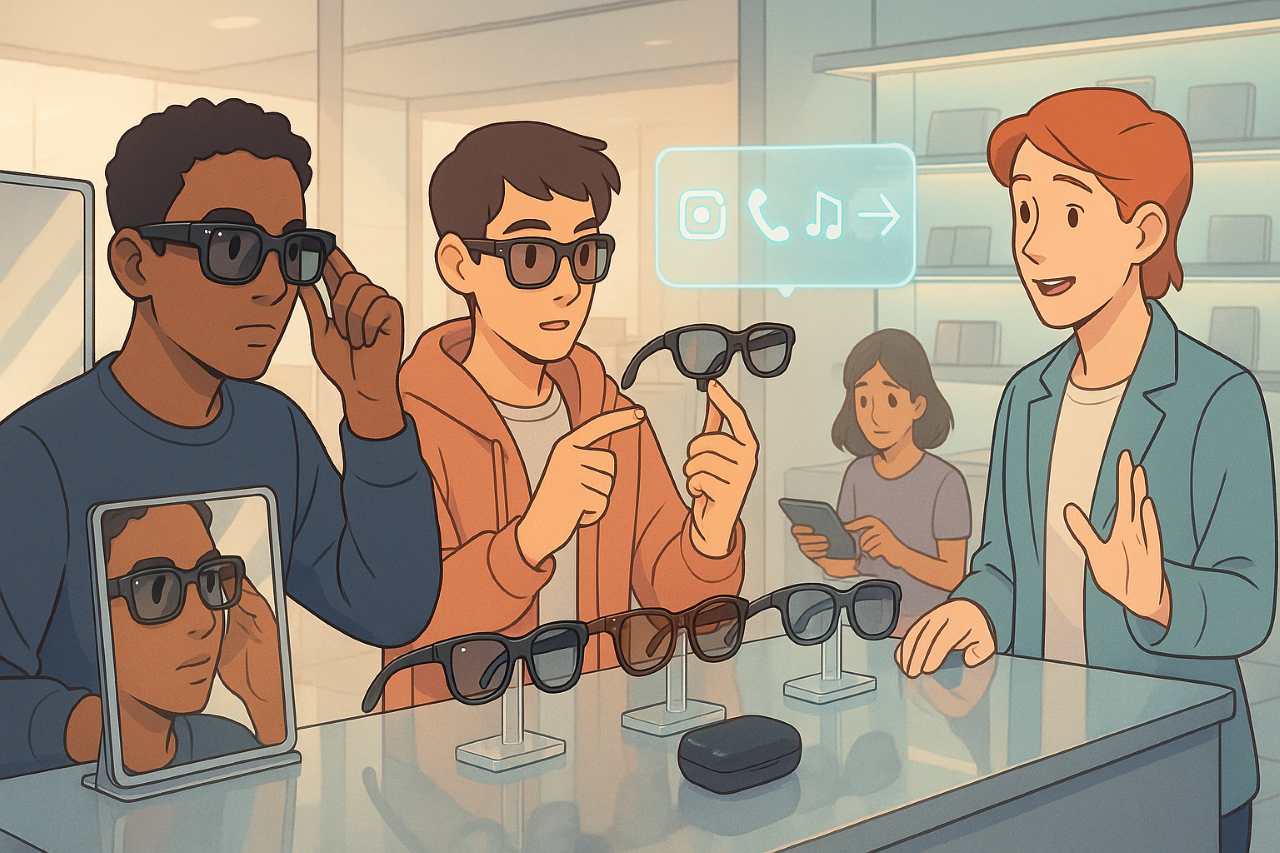Key Facts at a Glance
- What they are: Camera-equipped, voice-controlled “Meta AI glasses” built with Ray-Ban (and a new Display model with an AR-style screen).
- What they do: Capture photos/video, play audio, handle calls and messages hands-free, run Meta AI for live help, translation, and scene understanding.
- Battery: Gen 2 Ray-Ban Meta glasses up to ~8 hours per charge; case extends to ~48 hours (Meta claim).
- Phone required? Bluetooth pairing to your phone is standard; Wi-Fi/phone data is needed for Meta AI features, uploads, and updates.
- Calls: Yes—open-ear speakers and beam-forming mics support hands-free calls and messaging.
The Lineup: Which “Meta AI Glasses” Do What?
Ray-Ban Meta (Gen 2): Everyday capture with longer battery
The second-generation Ray-Ban Meta AI glasses lean into a “wear all day” vibe: lighter frames, open-ear speakers for private listening, and a 12MP ultrawide camera that shoots up to 3K/30fps video (plus 1440p/30 and 1200p/60 options). Battery life is markedly better than Gen 1, and the charging case acts like a power bank. They’re styled like classic Wayfarers/Headliners rather than tech gadgets.
Best for: hands-free photos, quick clips, voice notes, music/podcasts, and Meta AI queries on the go.
Ray-Ban Meta Display: An AR-style screen when you need visuals
New this year: a lens-integrated display that floats glanceable visuals in your field of view—think captions, navigation prompts, and video call previews so you can see who’s calling while they see your POV. It pairs with a wrist “Neural Band” for subtle gesture control, making true hands-free interaction more natural. Early hands-on reports call it the most capable take yet on everyday smart glasses.
Best for: live captioning, step-by-step instructions, POV video calls, and moments when you’d rather look up than down at a phone.
What Do the Meta Smart Glasses Actually Do?
Short answer: They’re a wearable camera, mic, and speaker system with Meta AI on top.
- Hands-free captures: Say “Hey Meta, take a photo” or start recording; the glasses handle framing and extraction while the app syncs to your phone for edits and sharing.
- Calls & messages: Use open-ear speakers and directional mics to take calls or send/receive texts across supported apps. No fishing out your phone.
- Live translation & captions: Ask for translations and contextual info about what you see or hear; on Display, you can view captions in-lens.
- Meta AI with visuals: Ask about an object, recipe steps, landmarks, or how to fix a bike chain; AI fuses what the camera sees with your query.
- Creator tools: Upcoming modes like hyperlapse and slow motion add variation for short-form video.
Performance note: Video and “always-listening” voice commands consume the most battery; music and sporadic captures draw less. Plan your day with the case in your bag.
Do Meta Glasses Need a Phone?
Usually, yes. The glasses pair to your phone via Bluetooth for setup, connectivity, and app syncing. You can still take captures and use some voice controls offline, but you’ll need Wi-Fi or mobile data for Meta AI, cloud imports, and updates. Think of the phone as the network anchor.
Can Meta Glasses Take Calls?
They can. Discreet open-ear speakers and beam-forming mics support hands-free calls and messaging; audio is designed so you hear clearly while keeping your ears open to your surroundings. Display adds the option to see incoming callers in-lens during WhatsApp/Messenger video calls.
Battery Life and Charging: What to Expect
Meta’s claim for Ray-Ban Meta (Gen 2) is up to ~8 hours of “typical” use—noticeably better than before. The charging case extends total time to roughly ~48 hours, and quick-charge gets you to about half a tank in minutes. If you film long clips or lean on voice features constantly, expect that number to drop; the case makes top-ups painless.
Privacy, Safety, and Social Cues
- A capture LED signals recording to people nearby. Respect local laws and private spaces.
- Microphones can be disabled; use on-device toggles and app permissions to control access.
- Avoid storing sensitive conversations; treat AI transcripts like email—useful, but personal.
(See Meta and Ray-Ban documentation for the latest privacy settings and indicators.)
Buying Tips: Which Model Is Right for You?
- Everyday commuters & students: Ray-Ban Meta AI Glasses (Gen 2)—longer battery, great audio, casual captures, voice notes, and AI queries.
- Creators & remote collaborators: Display—in-lens previews and video calls reduce “look down at phone” moments.
- Fitness & outdoors: Consider lighter, sport-leaning frames if you prioritize grip and durability; Meta highlighted a fitness-oriented option in its lineup. (Model availability varies by region.)
FAQ
What do the Meta smart glasses do?
They capture photos and high-quality video, play audio, place calls, send messages, and run Meta AI for translation, scene understanding, and step-by-step help—now with an optional in-lens display for captions, navigation, and video call previews.
Do Meta glasses need a phone?
Yes for setup, connectivity, and most features. You can take captures offline, but Meta AI, media sync, and updates require Wi-Fi or mobile data via your phone or a network.
Can Meta glasses take calls?
Yes. Open-ear speakers and mics enable hands-free voice calls and messaging; the Display model lets you see video callers in your view while sharing your POV.
How long does the battery last?
Meta cites up to ~8 hours on Gen 2, with a case that boosts endurance to ~48 hours—your mileage varies with video, voice wake words, and AI use.





